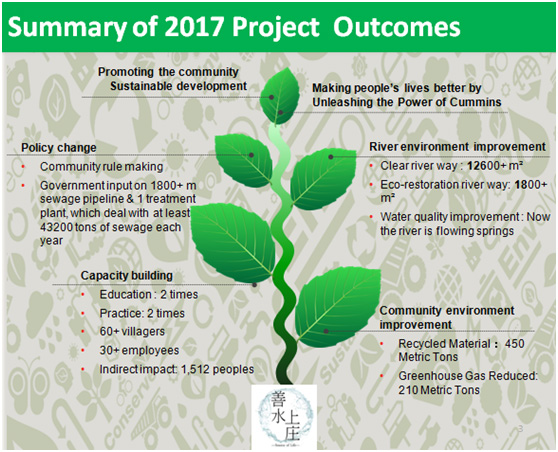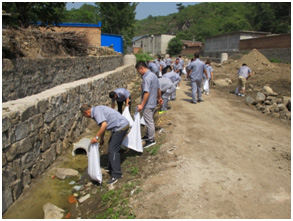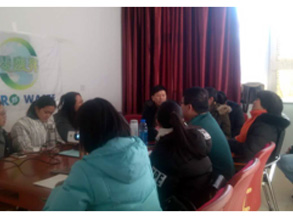Shangzhuang Watershed Eco-Restoration Project has been engaging in river-way pollution control activities and the eco – restoration of the river through environmental education and community participation. Its sustainability is in large part thanks to the emphasis project implementers placed on partnership, directly working with the local village as well as the Beijing Fotom Cummins Engine Company.

Beginning in October 2016 and still ongoing, this project has already garnered widespread attention for its success. It has become a site for community and government leaders visit to learn how they may replicate the project where they live. The first phase of the project consisted of river way pollution control activities, with the goals of clearing and eco-restoration following close behind as the second phase. This was achieved, as previously stated, through environmental education and community participation. Below follows a summary of activities taken towards the objective of eco-restoration of the river way
Water Quality Testing A professional organization was invited to test the water quality of the river way prior to the commencement of eco-restoration measures. Samples were collected from five locations along the stream in Shanghai village by the organization, while Future Generations China performed tests to establish a quality benchmark to compare with the data after the eco-restoration in order to measure for quality.

Eco-restoration Expert Field Visit and Proposals Three experts were invited to visit the river and provide suggestions. One expert specialized in wetland eco-restoration, the other two in sustainable landscape design. The experts recommended actions such as basing the restoration on natural curve, planting local species, include residents of the village in the re-design of the river way, and to try to attract external visitors. The plan was adjusted to include these suggestions.
Wastewater Pipeline Construction The construction of a wastewater pipelines stemmed from efforts begun in phase one. All local villagers contributed to the project with the common goal of creating a more beautiful homeland. Presently, the wastewater pipelines have all been buried in channels, and are carrying domestic wastewater from over 600 households to a sewage treatment location downstream.


River Way Clearing (Prior to Eco-restoration) Over 100 volunteers from Beijing Foton Cummins Engine Co. (BFCEC) volunteered their time to collect river way waste in Shangzhuang village. A total of 85 bags of garbage were collected, clearing the way for further action.
Eco-restoration With the sewage pipeline successfully buried, BFCED volunteers moved on to the ecological restoration of the river along with Shangzhaung villagers. 30 years of garbage was cleared away, local plants added as slope protection, and the landscape created with the river’s ecological progression in mind. In addition to Eco-restoration efforts, complementary projects were also undertaken in the realms of community service and capacity-building training.


In the interest of Information Sharing and Exchange, Future Generations China arranged facilitated the visit of seven students and two professors from Long Island University, as well as a visit and invitation for research from students studying at China Agricultural University. A number of NGOs and chiefs from 17 neighboring villages have also visited the site to learn best practices when it comes to small watershed management.
